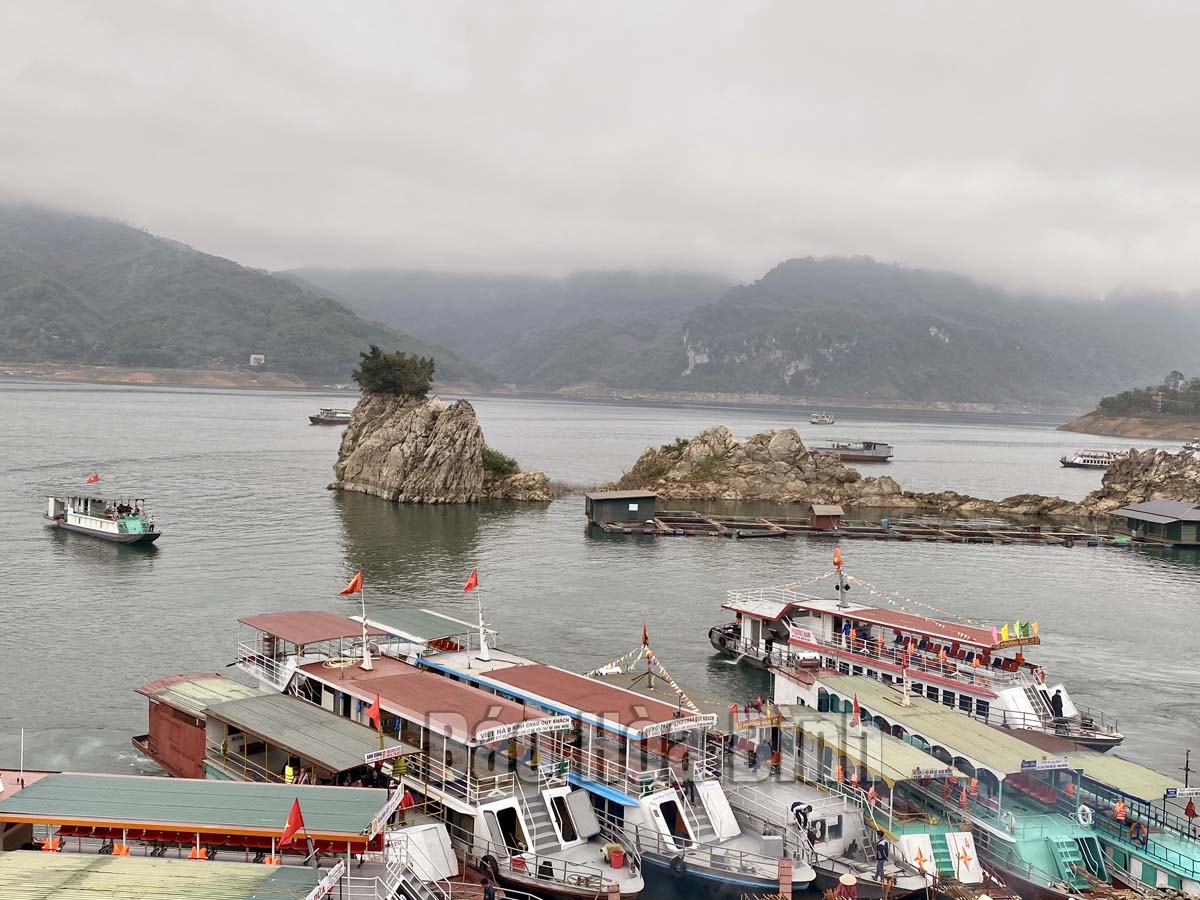
(HBO) - The tourism industry is thriving after 61 years and it has contributed tremendously to the economic growth of the locality, especially since the province's re-establishment.

The beautiful scenery at Ngoi Hoa Bay in Suoi Hoa commune (Tan Lac
district) is part of the potential for the development of Hoa Binh Lake Tourist
Area.
Mai Chau, a tourism hotspot of Hoa Binh province
has been chosen by many tourists for not only one but many of their trips. Here,
tourists can experience unforgettable culture, ethnic cuisine, and peaceful
feeling.
In the 2016-2020 period, over 334,500 tourists
visited Mai Chau each year, generating total revenue of 147.4 billion VND/year.
Here, community-based tourism has developed in event remote communes.
Ha Thi Hoa, head of the Culture and Sports
Department of Mai Chau district, said that Mai Chau has been focusing on
building the image of an "attractive - friendly - safe" tourist
destination while intensifying tourism promotion activities.
Hoa Binh Lake, dubbed the "Ha Long Bay on
the mountain", has proved its attraction to tourists. Local authority is
working to turn Hoa Binh Lake tourism site into a national tourism area.
Accordingly, investment is made to build tourism infrastructure, and the Hoa
Binh Lake tourism site is promoted on the media, in tandem with setting up
linkages in tourism activities with other Northern provinces and Hanoi capital.
It can be said that the Hoa Binh Lake tourism
site, which has initially achieved some conditions to become a national tourism
site and Mai Chau district are the highlights of the tourism industry of Hoa
Binh province.
In recent years, the number of tourists and
total revenue from tourism in Hoa Binh province has grown at an average rate of
over 10 percent per year. The province has attracted over 4.1 trillion VND
worth of investment in tourism, creating jobs for over 14,000 labourers,
including about 4,000 labourers with professional training.
Bui Thi Niem, Director of the Department of
Culture, Sports and Tourism, said that in order to optimise local advantages
and turn tourism into a spearhead economic sector of the province, Hoa Binh
will focus on sustainable tourism development, in association with preserving
and promoting ethnic cultural identities, landscapes and biodiversity, as
well as with the building of new-style rural areas.
Located just a 20-minute drive from Hoa Binh City, Ora Hill Farmstay & Glamping Hoa Binh is a captivating new destination nestled in Mo hamlet, Bình Thanh commune, Cao Phong district. Combining farming with leisure, this tranquil retreat is perfect for those seeking balance, joy, and an immersive experience in the expansive beauty of nature.
Muong Bi - Tan Lac is renowned as one of the four famous Muong regions in Hoa Binh province. Blessed by nature with a favourable climate and stunning landscapes, Tan Lac holds great advantages for tourism development. The local tourism industry has made remarkable strides in recent times thanks to the attention and support from the local authorities and sectors.
With its strategic location, well-developed transport network, and diverse soil and climatic conditions, Hoa Binh is emerging as a must-visit destination in Vietnam's northwestern tourism corridor. The province boasts numerous attractions, including the Kim Boi hot springs (Kim Boi district), the Dau Rong cave complex (Cao Phong), the Mai Chau valley (Mai Chau), and the iconic Hoa Binh hydropower plant.
The northern mountainous province of Hoa Binh has been listed among the 71 most beautiful places to visit worldwide by the prestigious US travel magazine Condé Nast Traveller.
Hoa Binh province’s rich natural and cultural resources position it as a prime location for developing community-based tourism (CBT). In recent years, support from central and provincial policies, as well as assistance from non-governmental organisations, have encouraged local ethnic minority and mountainous communities to actively engage in the sector.



